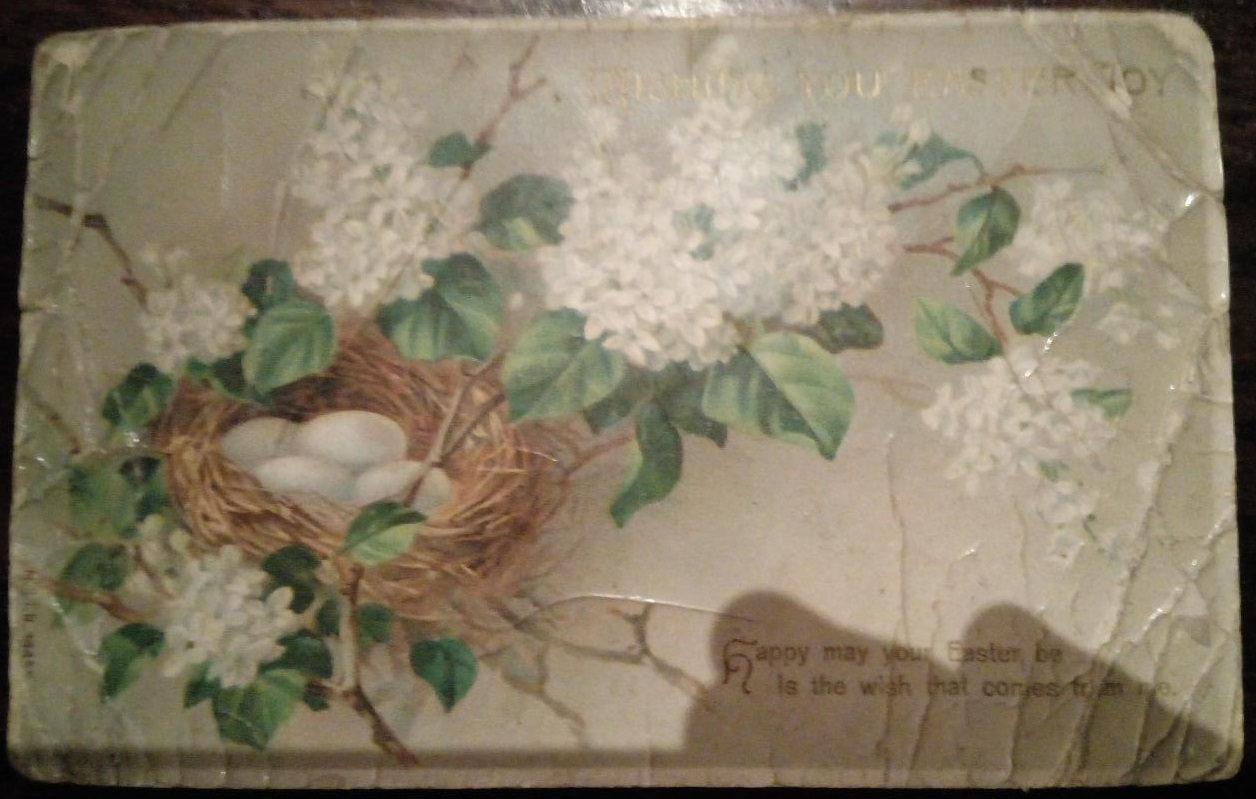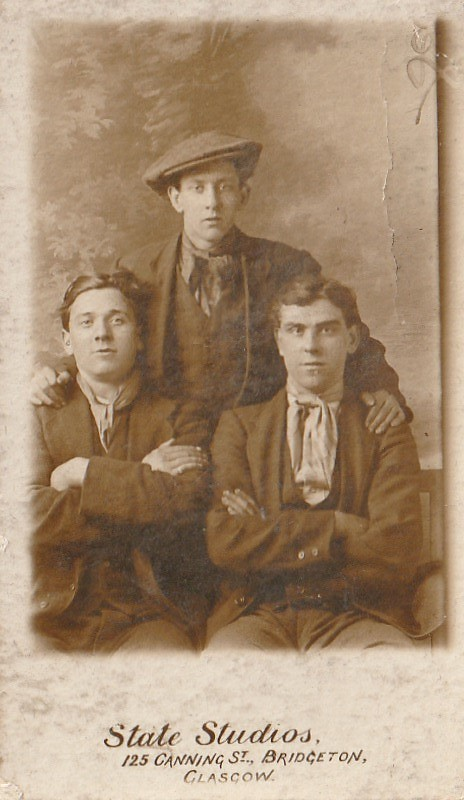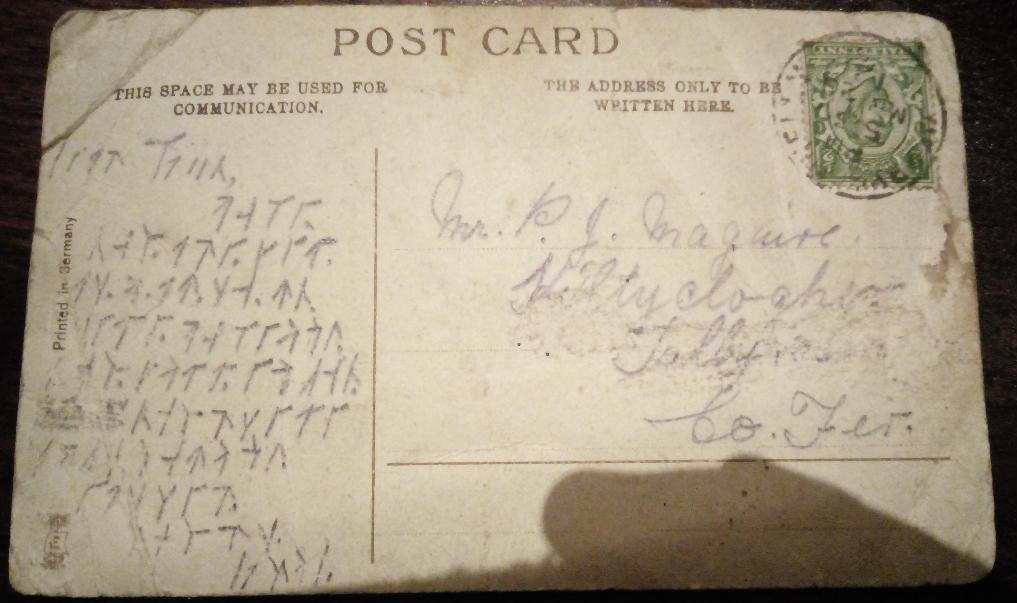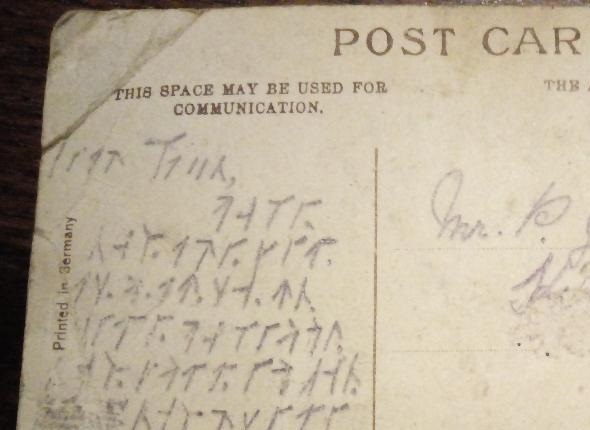In 1920, IRA member Patrick James McGuire received an encrypted Easter postcard. Does it contain a love message? Or is the content related to the Irish War of Independence?
Yesterday I received an email from Stephen Coyle. He wrote:
I am a historian based in Scotland and have been approached by the daughter of the late Patrick James McGuire, to ask for help to decode the cipher on the attached postcard. It was sent from somewhere in the United Kingdom to Patrick James McGuire at an address in County Fermanagh in Northern Ireland. The postmark is dated November 1920.
Here’s the picture side of the card:

Source: Stephen Coyle
According to Stephen, Patrick James McGuire was a member of the Scottish Brigade of the Irish Republican Army, who fought in the Easter Rising in Dublin, 1916. The following image shows Maguire as a young man. He is at the front on the right hand side.

Source: Stephen Coyle
Here’s the text side of the card:

Source: Stephen Coyle
The encryption system used is probably a MASC. The spaces between the words are indicated by periods. Some of the symbols are hard to read. The first word could be DEAR, followed by a name (PADY?). If this guess is correct, the word ARE appears in the third line. Can a reader find out more or prove me wrong?
Encrypted postcards of this kind usually contain love messages. This one was sent to a man, which is unusual, as most enciphered cards were written by young males to their loved ones. Perhaps, it is the other way round here.
Of course, it is also possible that this encrypted message has a more serious content. According to Stephen, it might be related to the Irish War of Independence, which was being fought at the time.
We’ll know more if we can read the plaintext.
Follow @KlausSchmeh
Further reading: From Russia with love: An unsolved encrypted postcard from 1906
Linkedin: https://www.linkedin.com/groups/13501820
Facebook: https://www.facebook.com/groups/763282653806483/



Kommentare (11)